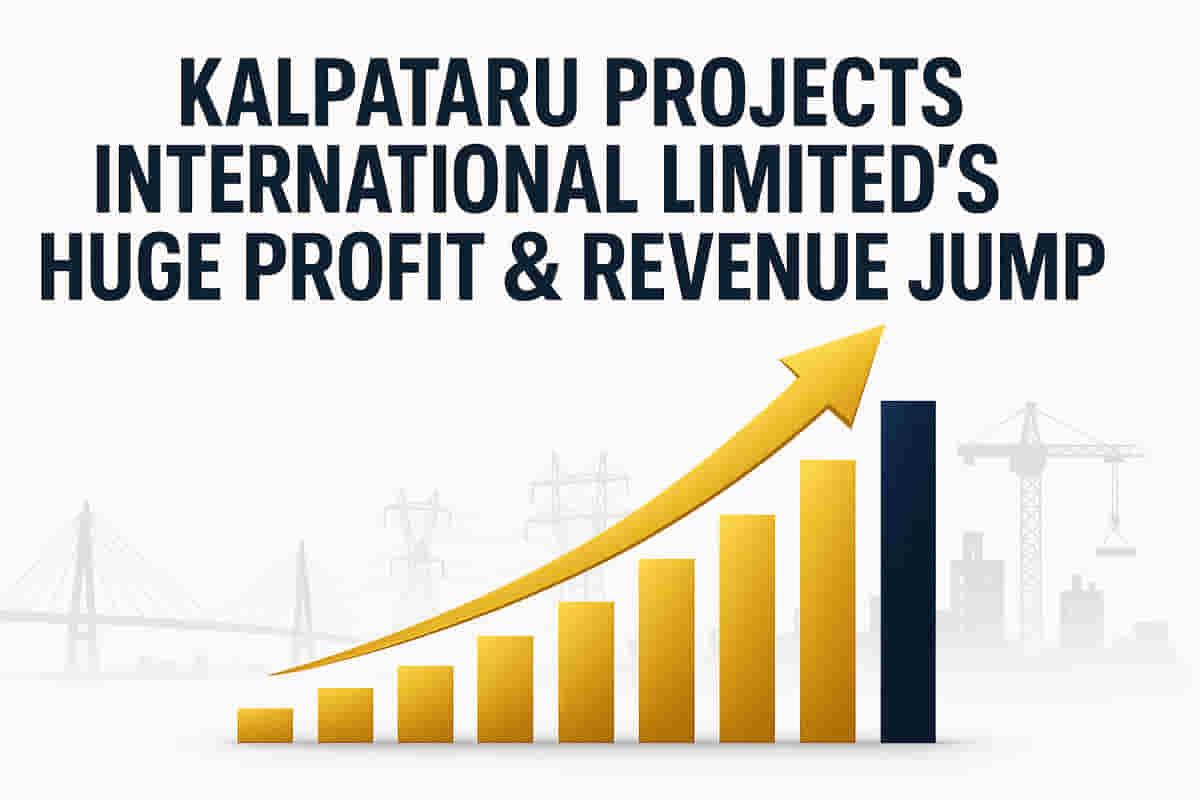Kalpataru Projects International Limited Posts 89% Profit Jump in Q2 FY26 on Strong Revenue Growth
Industrial Goods/Services
|
31st October 2025, 1:01 PM

▶
Stocks Mentioned :
Short Description :
Detailed Coverage :
Kalpataru Projects International Limited (KPIL) announced its financial results for the second quarter of Fiscal Year 2026, reporting a consolidated profit after tax (PAT) of ₹237 crore. This marks a substantial 89% increase compared to ₹126 crore in the same period last year. The company also achieved a record-high second-quarter revenue of ₹6,529 crore, registering a 32% year-on-year growth. Profit before tax (PBT) grew by 71% to ₹322 crore, with PBT margins improving by 110 basis points to 4.9%. Earnings Before Interest, Taxes, Depreciation, and Amortization (EBITDA) rose 28% to ₹561 crore, maintaining an 8.6% margin. For the first half of FY26, consolidated revenue reached ₹12,700 crore, a 33% increase, while PAT surged by 115% to ₹451 crore. Managing Director and CEO Manish Mohnot attributed this performance to a focus on profitable growth and efficient working capital management. KPIL's net working capital improved by eight days to 90 days, and net debt decreased by 14% to ₹3,169 crore. The company's order book remains strong at ₹64,682 crore, bolstered by new orders worth ₹14,951 crore secured year-to-date. KPIL is also well-positioned for additional orders estimated at ₹5,000 crore, particularly in its Transmission and Distribution business. Impact: These strong financial results, particularly the significant profit and revenue growth and the expanding order book, are highly positive for investor sentiment. They indicate robust operational performance and future revenue visibility, which can lead to increased investor confidence and potential stock price appreciation. Rating: 8/10 Heading: Difficult Terms Explained Consolidated Profit After Tax (PAT): This is the total profit of a company and all its subsidiaries after deducting all expenses, including taxes. Revenue: The total income generated by a company from its primary business activities before deducting expenses. Profit Before Tax (PBT): The profit a company makes before subtracting taxes. Margins: The ratio of profit to revenue, indicating how much profit is generated for every unit of revenue. Basis Points: A unit of measure used in finance equal to one-hundredth of a percent (0.01%). 110 basis points equal 1.1%. EBITDA: A measure of a company's operating performance before accounting for interest, taxes, depreciation, and amortization. Net Working Capital: The difference between a company's current assets and current liabilities, representing the liquidity available for day-to-day operations. A lower number of days typically means more efficient cash management. Net Debt: The total amount of debt a company owes minus its cash and cash equivalents. Order Book: The total value of contracts awarded to a company that have not yet been completed. Transmission and Distribution (T&D): Refers to the process of transmitting electricity from power generation plants to substations and then distributing it to end-users.